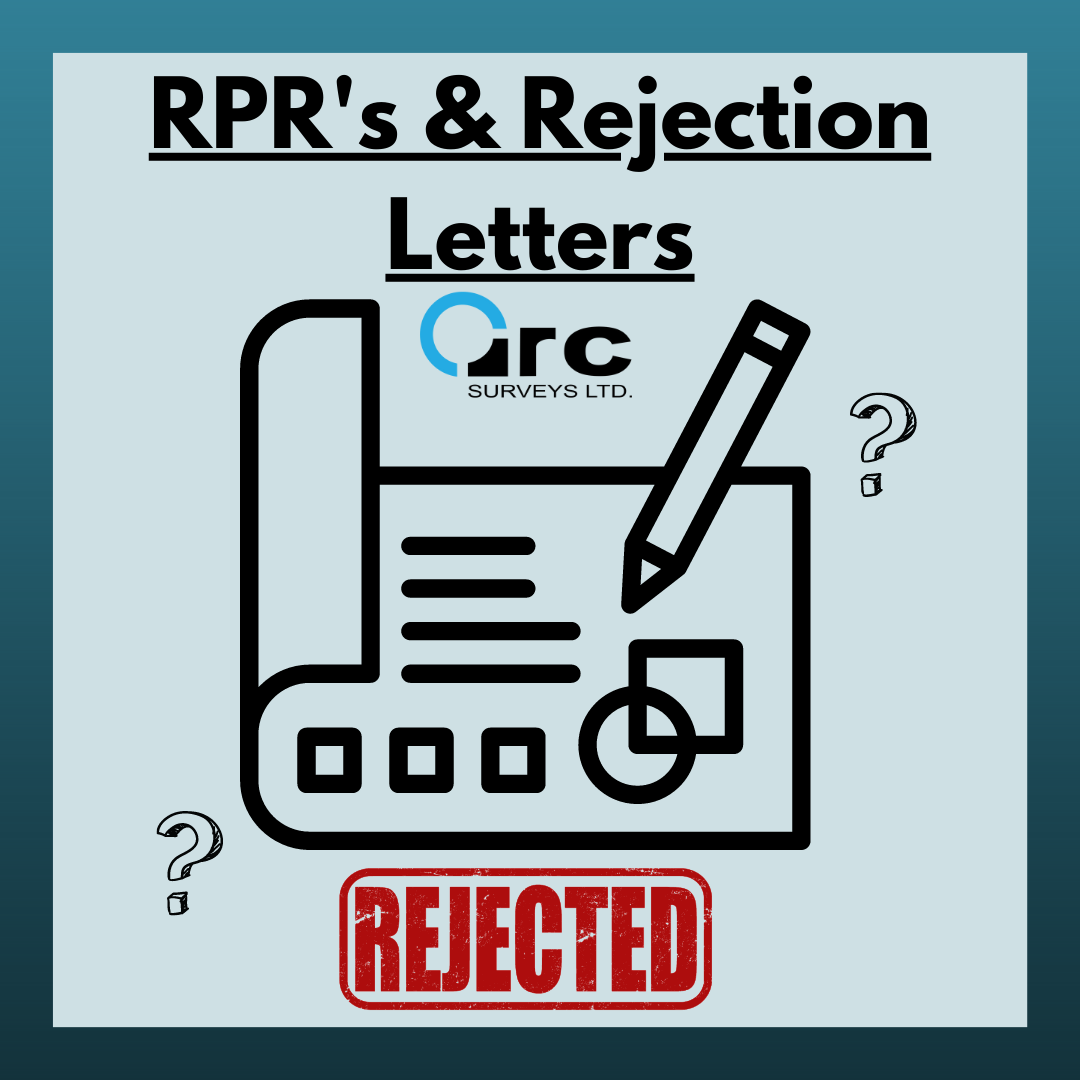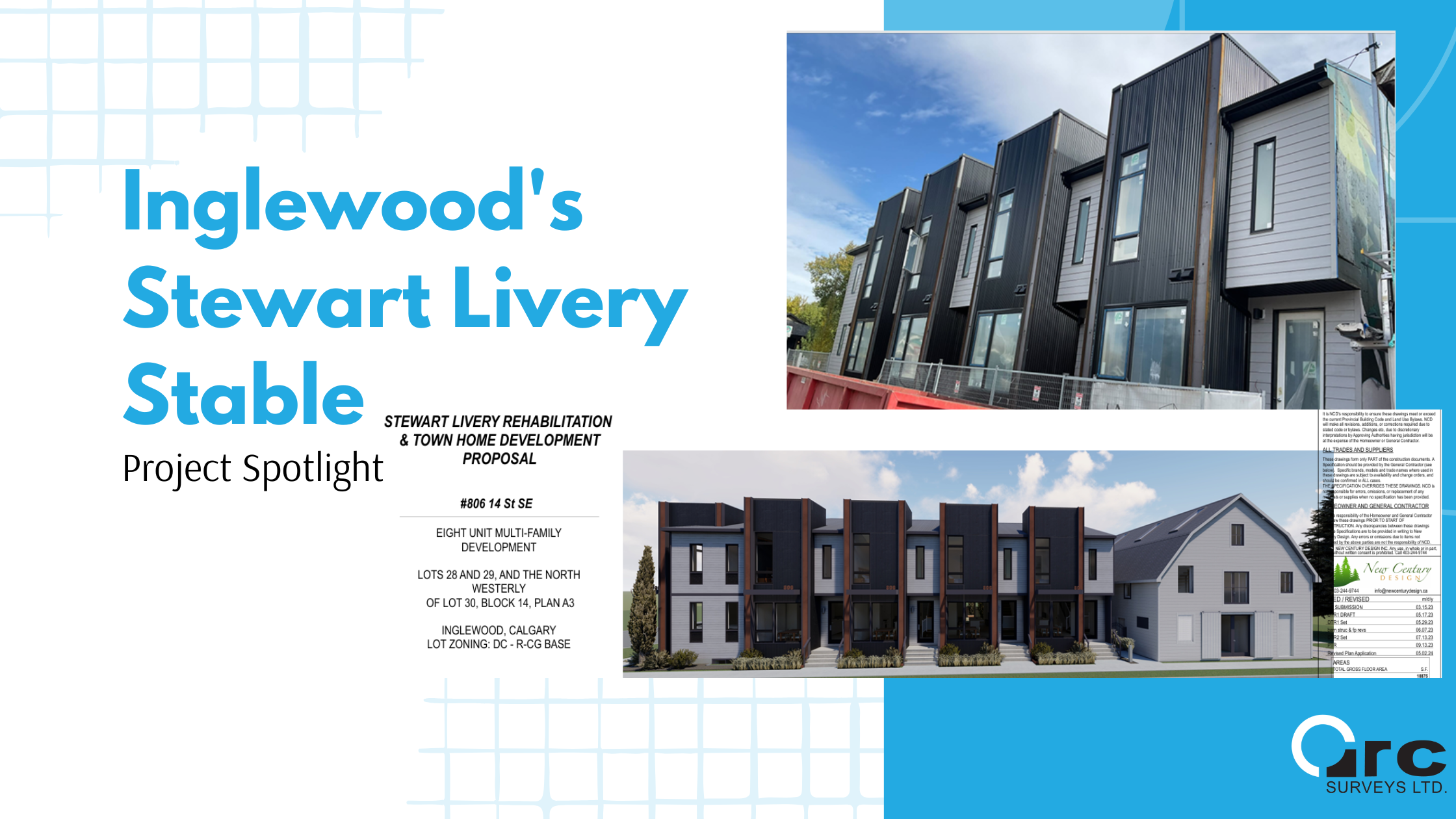Introduction
A Real Property Report (RPR) is a survey drawing showing the location of buildings and structures on a parcel of land. This includes the driveway, house, decks, sheds, fences, garages, and other outbuildings. The RPR shows lot dimensions and identifies easements, encroachments, and rights of way.
An RPR is prepared by a licensed Alberta Land Surveyor and will be required to be reviewed by your municipality for compliance if you plan on selling your home.
What happens during the compliance review?
During the compliance review, your municipality will examine the RPR to determine if the permanent structures on the property meet the current land use bylaws. This includes but is not limited to: decks being at the legal height, air conditioning units being placed in a proper location and accessory buildings meeting the appropriate sizing requirements.
It’s good to remember that each municipality has their own specific bylaw structure – it is always advised to reach out to them before making any permanent changes to your property in order to avoid any discrepancies down the line.
What happens if my RPR does not receive Compliance?
When an RPR is deemed non-compliant, most municipalities will issue a rejection letter or a notice of non-compliance to the compliance applicant, usually via email.
The letter will outline all the information regarding the reasoning behind the rejection and subsequent non-compliance. For example, if your deck is too tall, your air conditioning unit is placed too close to certain setbacks or property lines, or if you accessory building does not meet the proper sizing requirements, your RPR will most likely come face to face with a rejection letter.
What is the process to receive compliance after rejection?
Following the administration of a rejected RPR, the municipality will usually give you an option to apply for a relaxation the bylaw however it’s good to keep in mind that each municipality has a different way of handling a rejected RPR.
While there is typically no extra cost to enter into a relaxation application, it’s good to note that there may be additional processing fees should you choose to have your surveying company submit the application on your behalf. This application acts a agreement between you and you municipality which allows the structure causing the infraction to remain on the property as-is.
While a relaxation application will help you obtain compliance, the course to have this application submitted and processed can take some additional time. Some relaxation applications may take up to 2-3 months for the application to be processed and for the RPR to then receive compliance.
Once the relaxation has been completed, your municipality will stamp or issue your RPR with compliance and return it you via email or mail.
Conclusion
Throughout our many years in the land surveying industry, we have seen our fair share of non-compliant RPR’s and we understand that the relaxation process may seem confusing. If you have any questions or concerns about your RPR receiving a rejection letter, please do not hesitate to email or call.
Our educated team will help put your mind at ease when it comes to solving any discrepancies shown on your RPR.
Arc Surveys
We hope this article gave you some better insight on non-compliance. If you have any questions about obtaining compliance on your RPR, give us a call (403-277-1272) or send us an email (info@arcsurveys.ca). We’re always happy to help!






